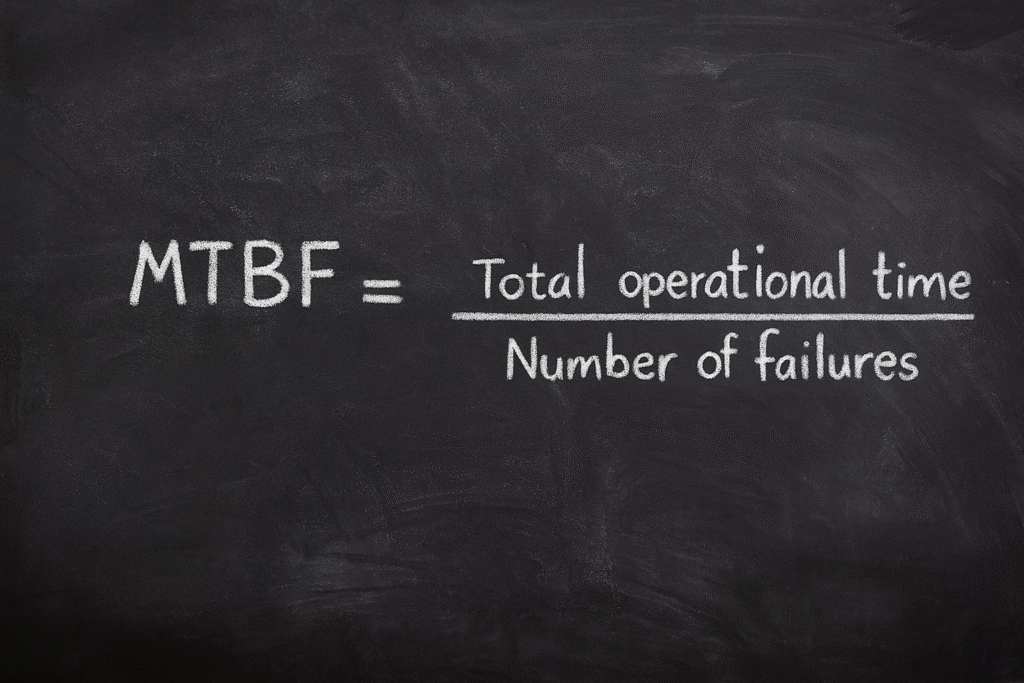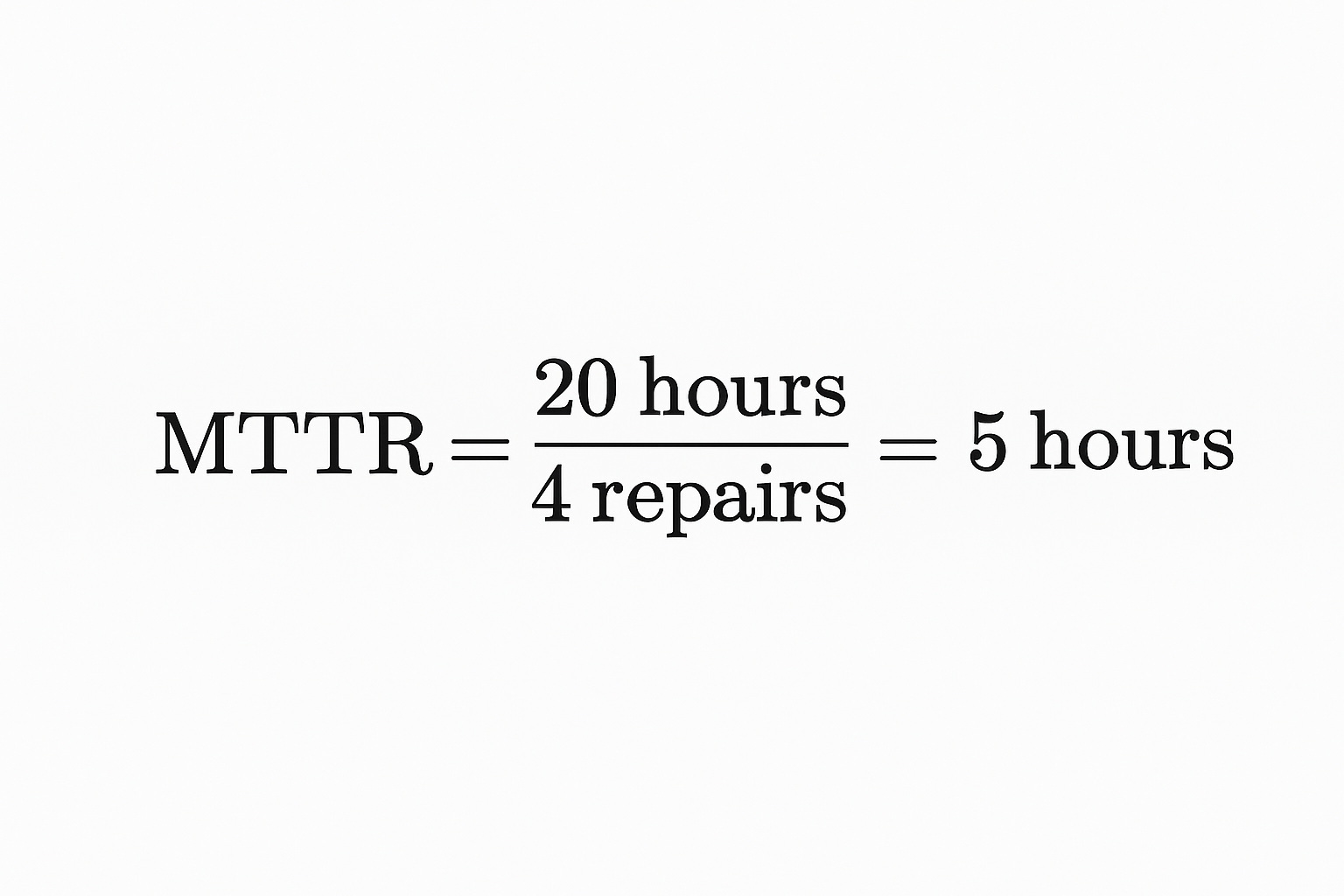Reliability metrics are the cornerstone of any robust maintenance and engineering program.
By quantifying how often equipment fails and how quickly it can be restored, organizations can make data-driven decisions to minimize downtime, extend asset life, and optimize maintenance budgets.

Two of the most essential metrics in this realm are Mean Time Between Failures (MTBF) and Mean Time To Repair (MTTR).
In this guide, we’ll demystify both formulas, show you how to calculate them, and explain why they matter for your reliability strategy.
What Are Reliability Metrics?
Reliability metrics provide objective measures of equipment performance over time. Instead of relying on gut feelings or anecdotal evidence, engineers and maintenance teams use MTBF and MTTR to:
- Benchmark performance against industry standards or internal targets.
- Identify trends in failure frequency or repair efficiency.
- Prioritize investments in spare parts, preventive maintenance, and training.
By translating raw operational data into standardized ratios, MTBF and MTTR give you the clarity to compare machines, sites, or shifts on a level playing field—regardless of scale or complexity.
Understanding Mean Time Between Failures (MTBF)
Mean Time Between Failures (MTBF) measures the average operational runtime between one failure and the next. A higher MTBF indicates fewer breakdowns and greater uptime.
To calculate MTBF, use the formula:
MTBF=Total operational time / Number of failures

- Total operational time: Cumulative hours (or cycles) that equipment runs under normal conditions.
- Number of failures: Count of unplanned stoppages or malfunctions during the measurement period.
Example:
If a production line runs for 12,000 hours in a month and experiences 4 failures, then:
MTBF=12000 hours/ 4 failures =3000 hours

An MTBF of 3,000 hours means, on average, the line operates 3,000 hours before a breakdown occurs.
Understanding Mean Time To Repair (MTTR)
Mean Time To Repair (MTTR) quantifies how long it takes, on average, to restore a failed asset to full operation. A lower MTTR reflects faster repairs and less accumulated downtime.
The MTTR formula is:
MTTR= Total downtime / Number of repairs

- Total downtime: Sum of all hours (or minutes) that equipment remains out of service.
- Number of repairs: Total count of corrective actions performed.
Example:
If those same 4 failures required a combined 20 hours of repair time:
MTTR= 20 hours / 4 repairs = 5 hours

An MTTR of 5 hours means each repair took, on average, five hours from fault detection to full restoration.
Why MTBF & MTTR Matter Together
While MTBF tells you how often failures happen, MTTR reveals how quickly you recover. By tracking both, you can:
- Balance Reliability vs. Maintainability
A high MTBF with a long MTTR might still result in unacceptable production losses. Conversely, excellent MTTR can’t compensate for very frequent failures. - Optimize Spare-Parts Inventory
Understanding downtime costs helps you justify stocking critical spares for rapid response, rather than maintaining large parts warehouses. - Allocate Maintenance Resources
Teams can prioritize equipment with poor MTBF and MTTR trends—targeting root-cause analyses, redesigns, or vendor support.
Best Practices to Improve MTBF & MTTR
Boosting MTBF
- Preventive Maintenance: Schedule lubrication, inspections, and parts replacements before wear leads to failure.
- Root Cause Analysis: Use structured tools (e.g., 5 Whys, Fishbone Diagrams) to eliminate recurring failure modes.
- Operator Training: Empower frontline staff to spot early warning signs and perform basic adjustments.
Reducing MTTR
- Standardized Procedures: Develop clear, step-by-step repair guides and checklists for common failures.
- Emergency Kits & Spares: Pre-stage high-failure parts and tools at the point of use.
- Cross-Functional Teams: Coordinate between maintenance, operations, and procurement to streamline diagnosis and restore workflow rapidly.
Conclusion
Mean Time Between Failures (MTBF) and Mean Time To Repair (MTTR) are more than acronyms—they’re actionable metrics that drive reliability excellence.
By accurately calculating MTBF and MTTR, benchmarking performance, and implementing targeted improvements, organizations can maximize equipment uptime, reduce costs, and maintain a competitive edge.
Start tracking these metrics today to transform your maintenance strategy from reactive firefighting to proactive reliability engineering.

No comments yet